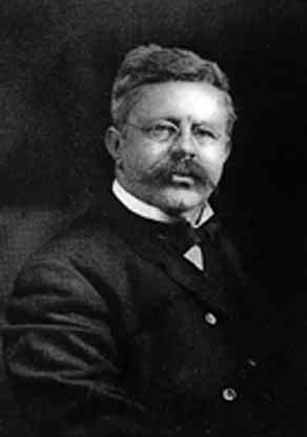
1848 - 1919

Frank Duveneck
Frank Duveneck was an American figure and portrait painter.
Duveneck was born in Covington, Kentucky, the son of German immigrant Bernard Decker. Decker died when Frank was only a year old and his widow remarried Joseph Duveneck. By the age of fifteen Frank had begun the study of art under the tutelage of a local painter, Johann Schmitt and had been apprenticed to a German firm of Church Decorators. While having grown up in Covington, Duveneck was a part of the German community in Cincinnati, Ohio, just across the Ohio River. However, due to his Catholic beliefs and German heritage, he was an outsider as far as the artistic community of Cincinnati was concerned. In 1869 he went abroad to study with Wilhelm von Diez and Wilhelm Leibl at the Royal Academy of Münich, where he learned a dark, realistic and direct style of painting. He subsequently became one of the young American painters-others were William Merritt Chase, John Henry Twachtman, and Walter Shirlaw - who in the 1870's overturned the traditions of the Hudson River School and started a new art movement characterized by a greater freedom of paint application. His work, at first ignored, when shown in Boston and elsewhere about 1875, attracted great attention, and many pupils flocked to him in Germany and Italy, where he made long visits. Henry James called him "the unsuspected genius" and at the age of 27 he was a celebrated artist. In 1878 Duveneck opened a school in Munich, and in the village of Polling in Bavaria. His students, known as the "Duveneck Boys", included Twachtman, Otto Bacher, Julius Rolshoven, and Herman Wessel. In 1886 Duveneck married one of his students who was much admired by Henry James, Boston-born Elizabeth Boott. They lived in Bellosguardo for two years where she produced a son. She died later in Paris of pneumonia. Duveneck was devastated.Frank Duveneck & Elizabeth Boott Duveneck: An American Romance, by Carol M. Osborne
Portrait of Elizabeth Boott: 1886
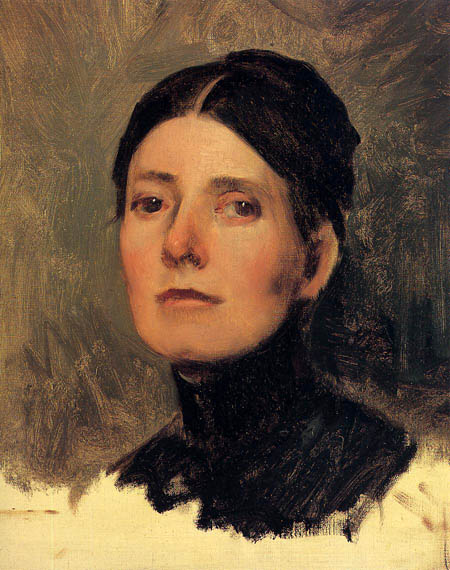
Elizabeth Boott Duveneck: 1888
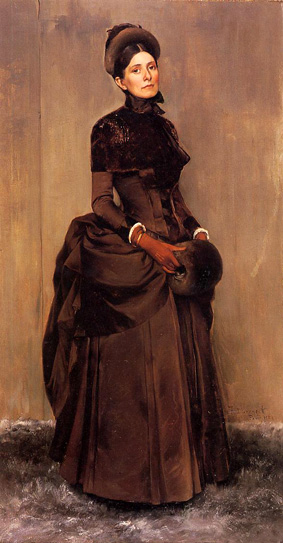
Tomb Effigy of Elizabeth Boott Duveneck: 1891
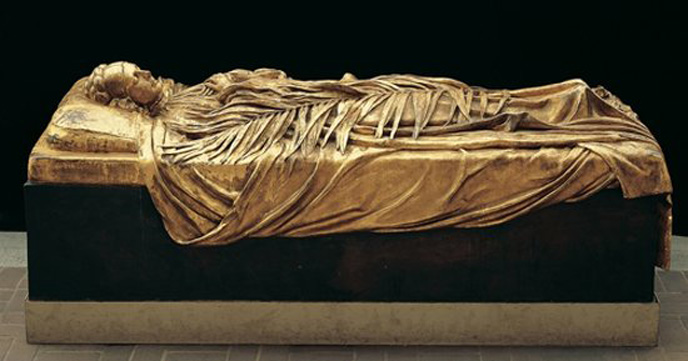
Tomb of Elizabeth Duveneck
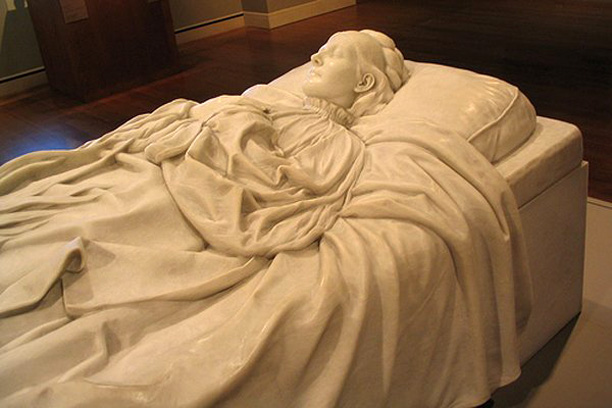
Lady with Fan: 1873
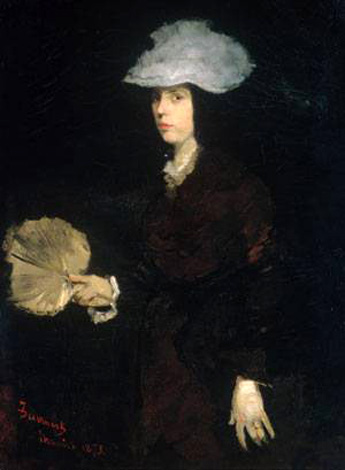
Whistling Boy: 1872

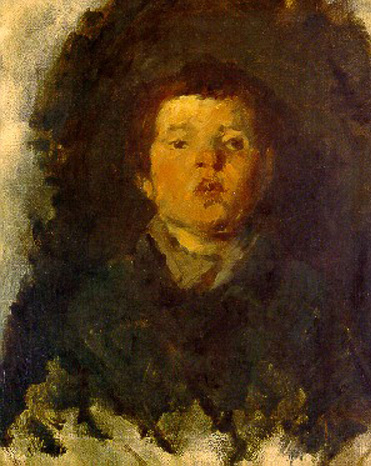
Other Examples of Frank Duveneck's Works
A Child of the People: 1887
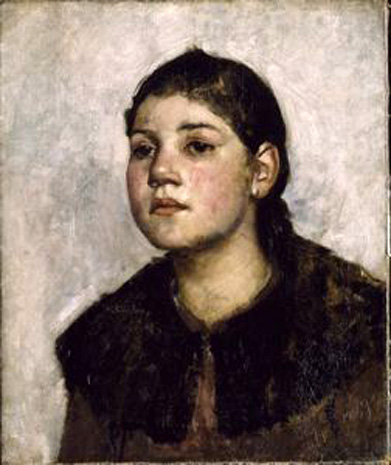
A Child's Portrait
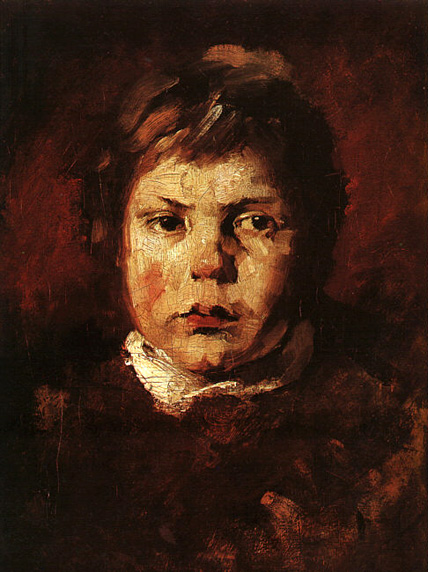
Beachwoods at Polling: 1878
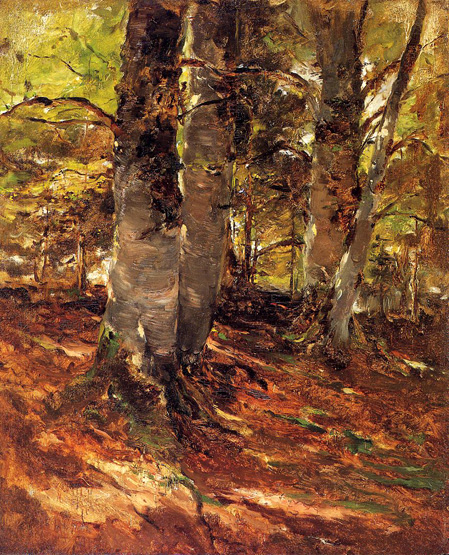
Caucasian Soldier: 1870
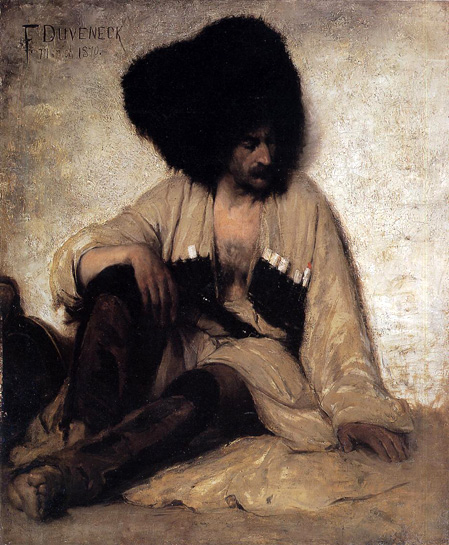
Columbus before the Council of Salamanca
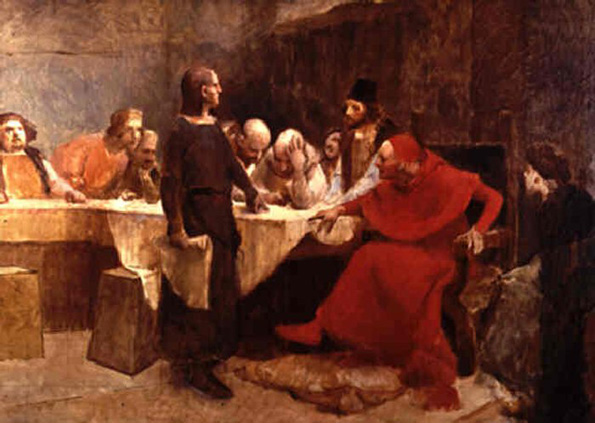
F.B. Duveneck as a Child: 1890

Fellow Artist in Costume: ca 1880
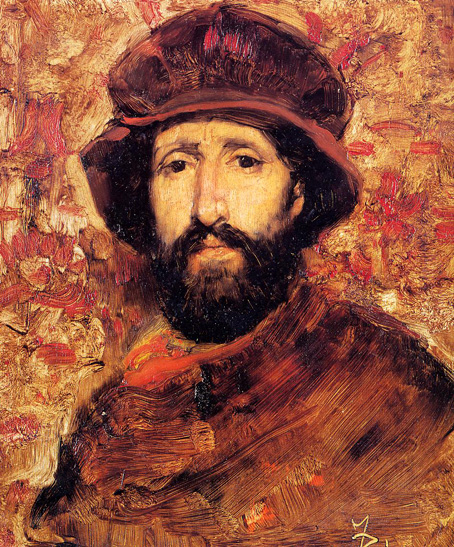
Florentine Flower Girl: ca 1886

Florentine Flower Girl: ca 1887
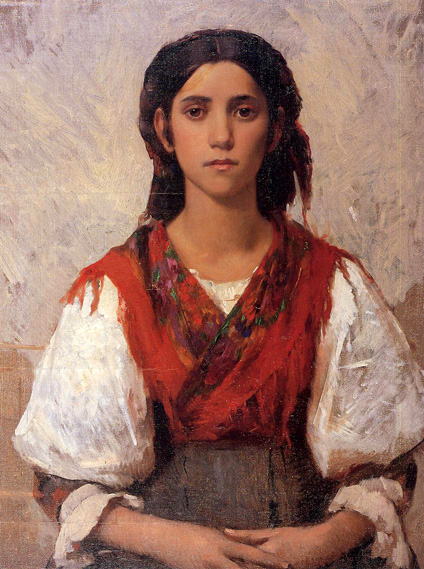
The Florentine Girl: 1887

Girl Reading: ca 1876
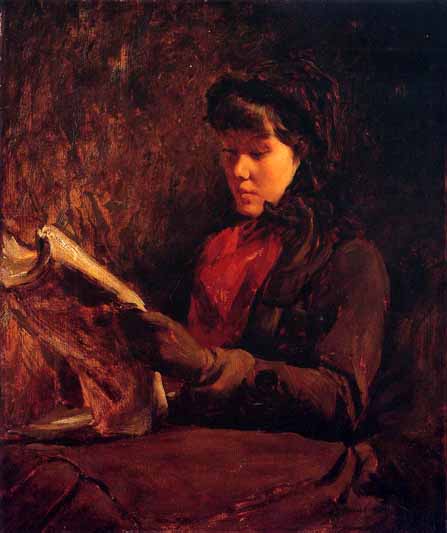
Girl with Orange Shawl

Girl with Parasol: 1900
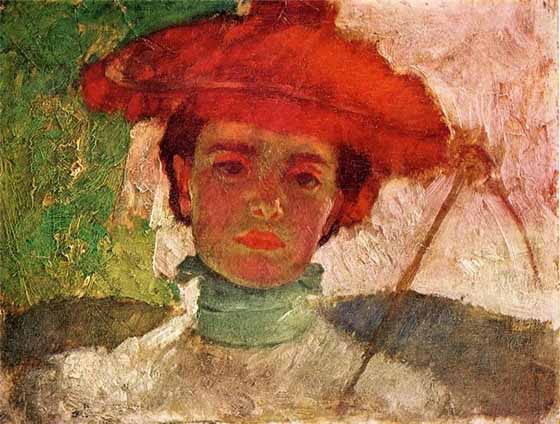
Girl with Rake: 1884
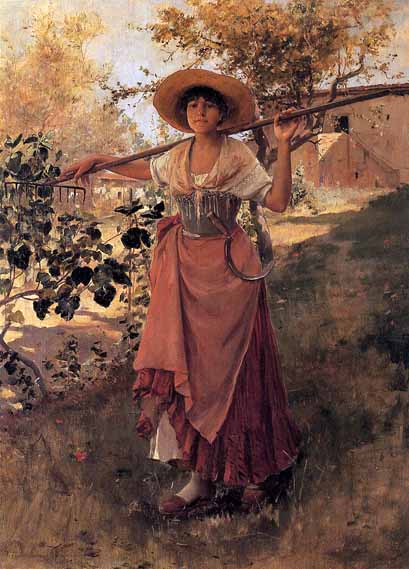
Grand Canal in Venice: ca 1883

Guard of the Harem (Study): 1879
_1879.jpg)
Harbour Chioggia
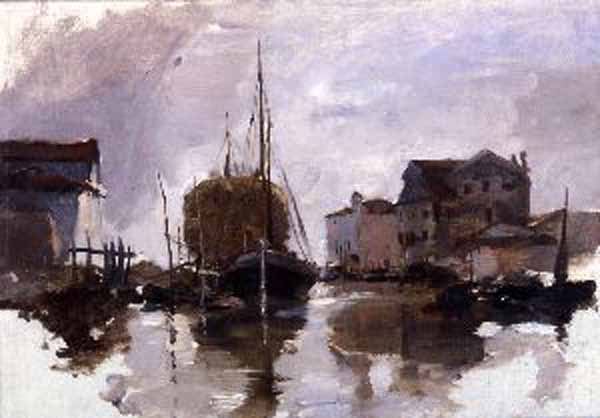
He Lives by His Wits: 1878
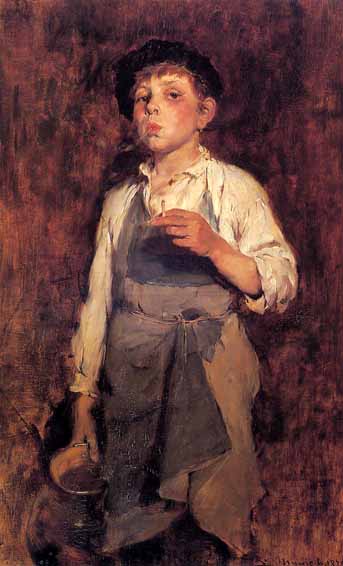
Head of a Young Girl: ca 1878
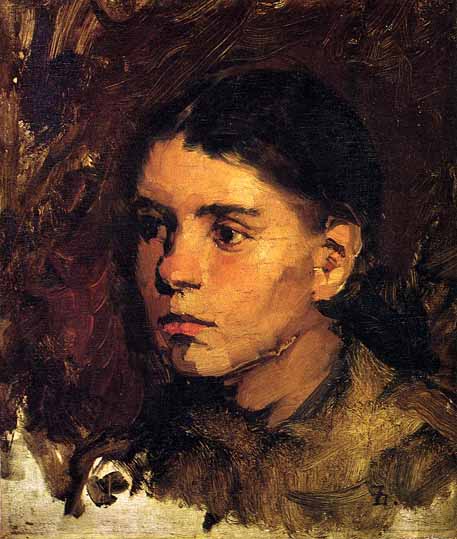
Head of an Italian Woman: 1887
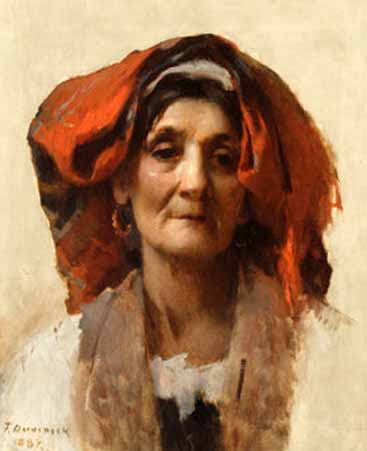
Head of an Old Man: ca 1877-79
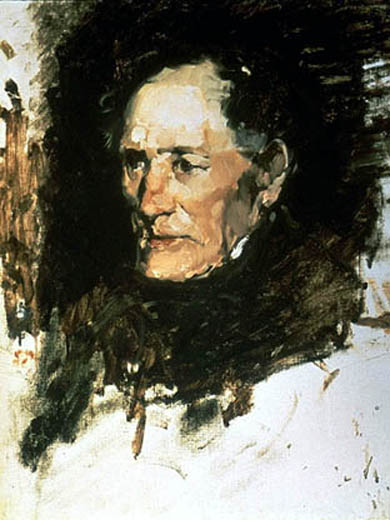
Head of an Oriental Woman: 1880
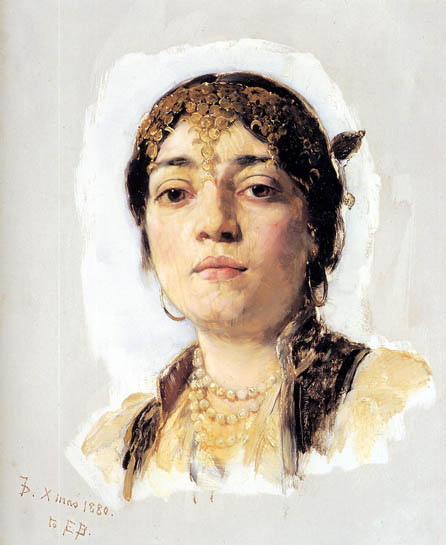
Heads and Hands (Study): 1879
_1879.jpg)
Italian Courtyard: 1886-87

Lady in Red: ca 1885
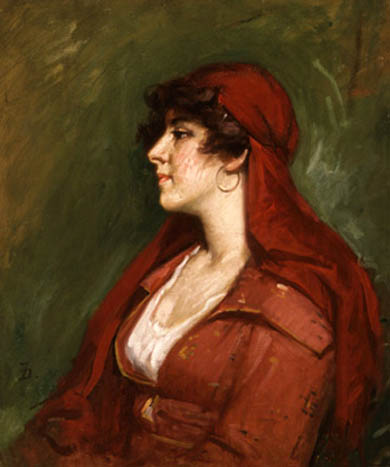
Cincinnati's most famous artist, Frank Duveneck, was actually a Kentuckian raised on Greenup Street in Covington. In the history of American art, Duveneck's fame rests mainly on his early work, produced while studying at the Academy in Munich, Germany. Characterized by the use of dark colors, somber lighting, and expressive brushwork, Duveneck's best-known piece, The Whistling Boy, is an excellent example of his early style. By 1880 however, Duveneck was living primarily in Italy, where his approach to painting changed somewhat. Perhaps under the influence of Italian light and scenery he began to use brighter colors and more direct lighting techniques, also possibly reflecting the developments of the Impressionists. Using the strong complimentary colors red and green as well as dramatic brushstrokes, this portrait of an Italian peasant woman showcases Duveneck's later work.
Lady with a Red Hat

Landscape at Polling: ca: 1876
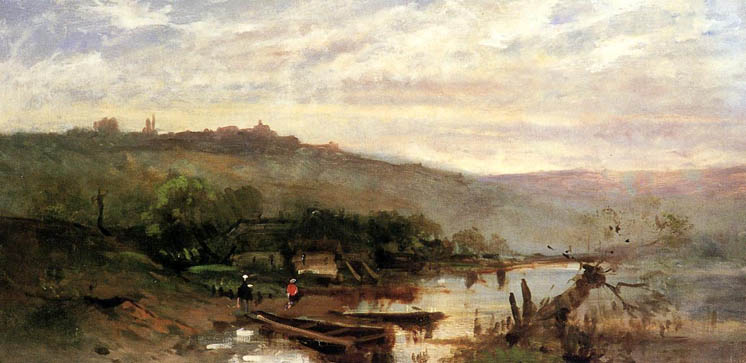
Leslie Pease Barnum: 1876
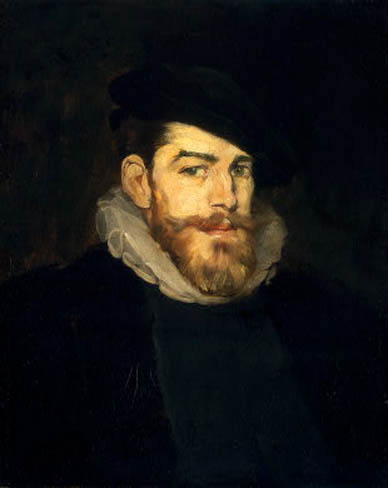
Little Girl in Red Dress: 1890
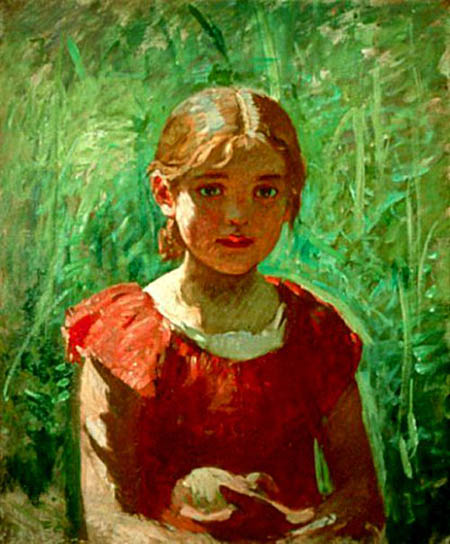
Mary Cabot Wheelwright: 1882
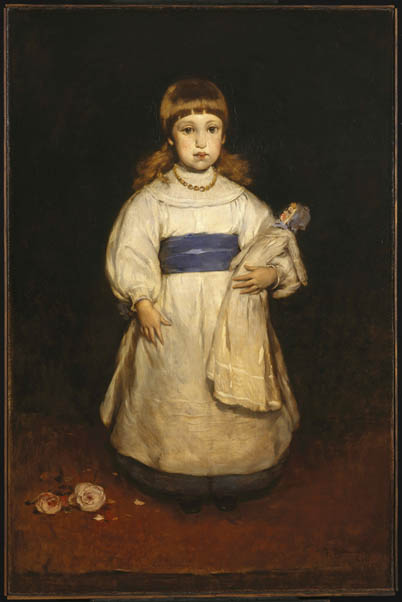
Nude Standing: 1892
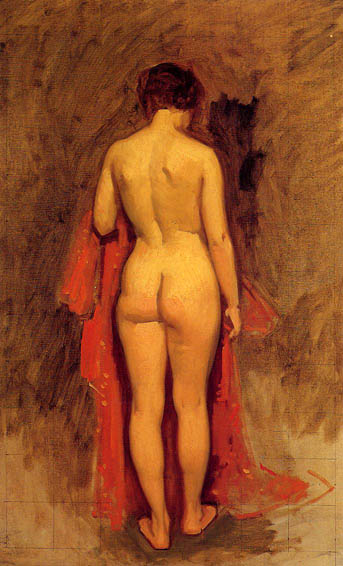
Old Towl Brook Polling Bavaria: 1878
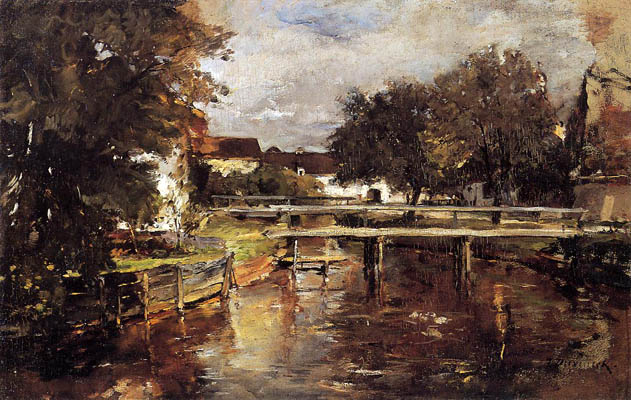
Polling Landscape: 1881

Portrait of a Boy: 1882
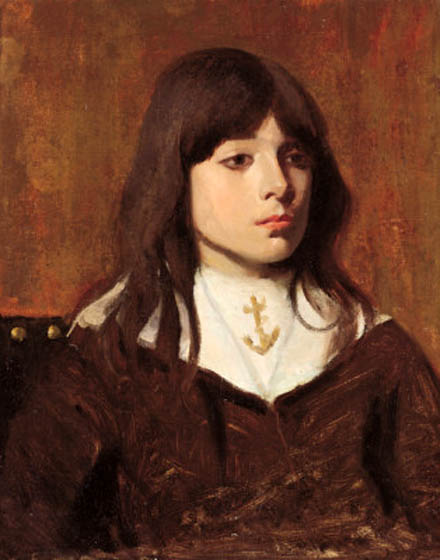
Duveneck was one of many Americans who studied art in Munich rather than Paris to avoid the rigid structure of French academies. This image of a young boy in seventeenth-century costume is typical of his many rapidly painted portrait studies composed during a second trip to Germany. The artist's energetic style is apparent in the vigorous brushwork and dark tones, gleaned from his German teachers and from seventeenth-century Dutch painting.
Portrait of a Fellow Artist: 1870
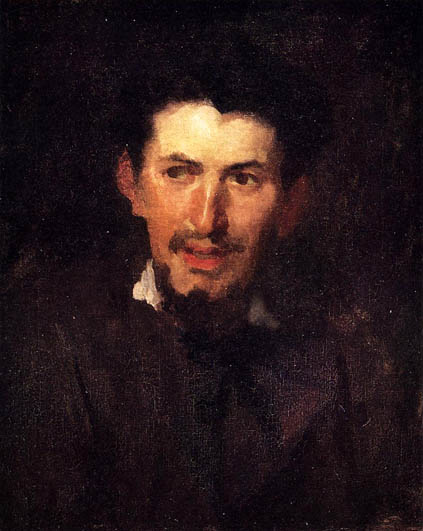
Portrait of a Man
(Richard Creifelds): ca 1876
_ca_1876.jpg)
Portrait of a Woman with Black Hat: 1890
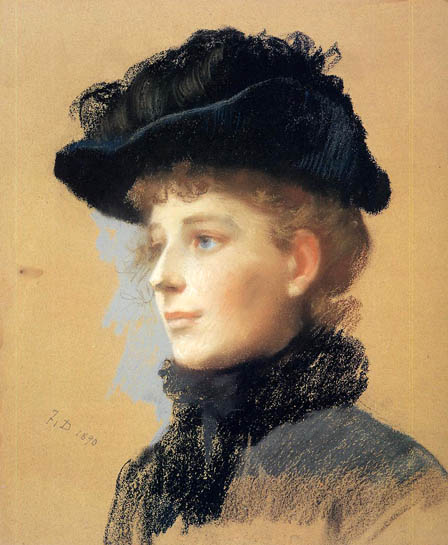
Portrait of Brother John: 1900
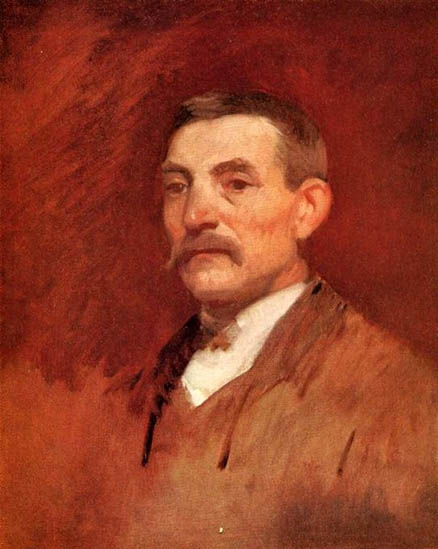
Portrait of Emil Carlson: ca 1884
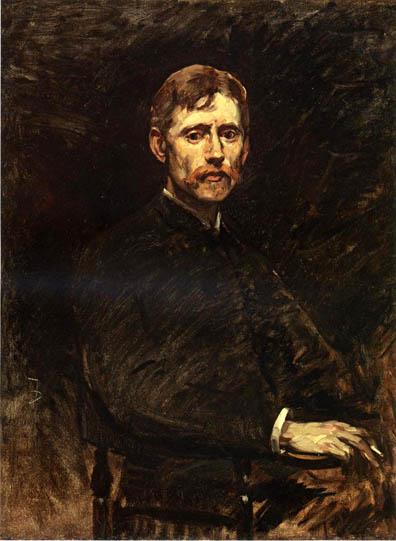
Portrait of Frances Schillinger Hinkle: 1875
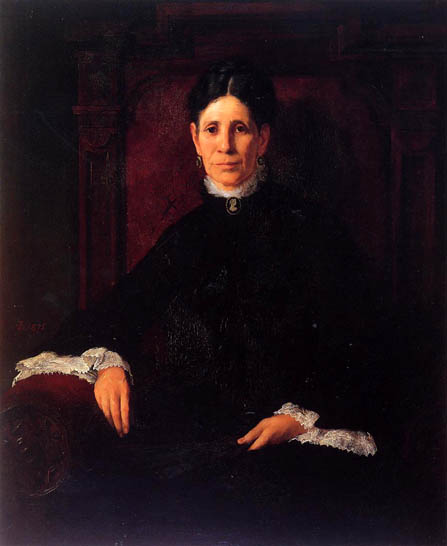
Portrait of Leon Lippert: 1930

Portrait of Maggie Wilson: 1898
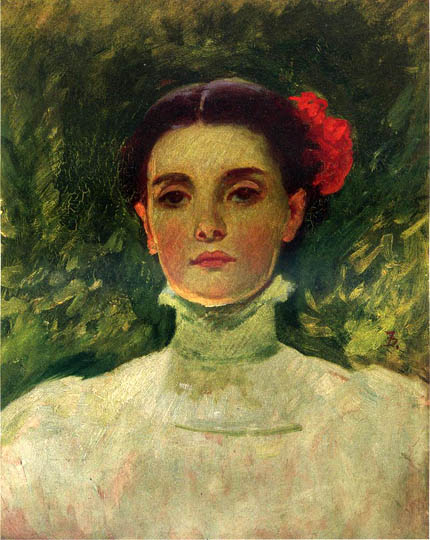
Portrait of Major Dillard H. Clark: 1877
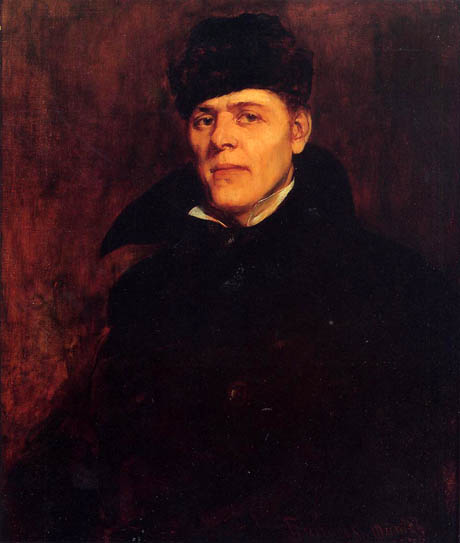
Portrait of Ralph Curtis: 1872
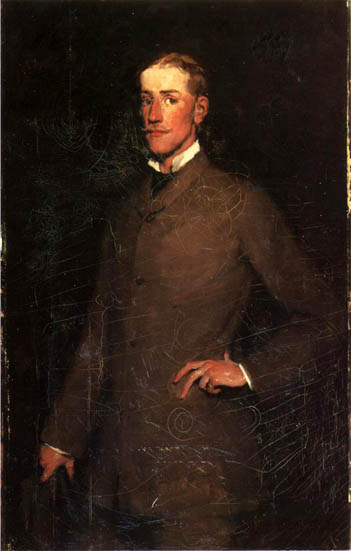
Portrait of William Merritt Chase: ca 1876

Profile of Girl with Hat: 1878
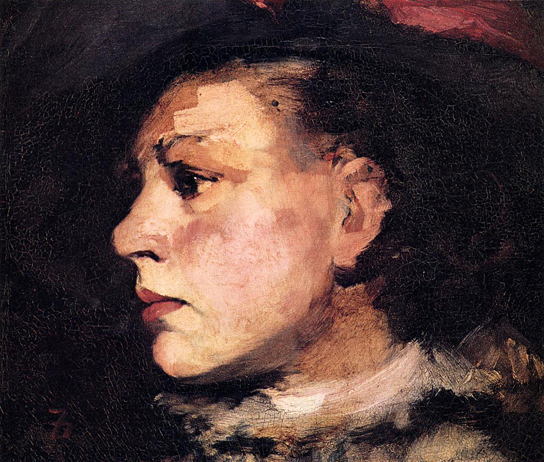
Reclining Nude
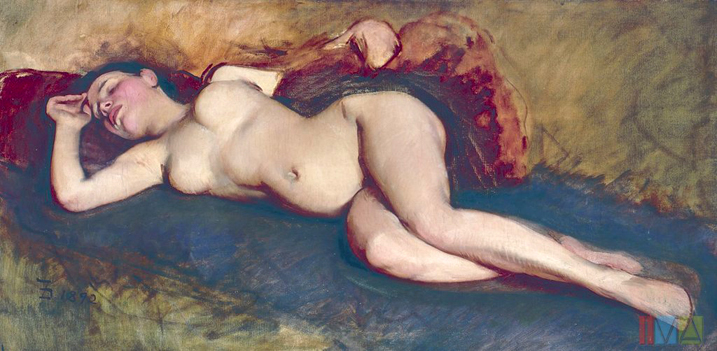
Reclining Nude: ca 1890
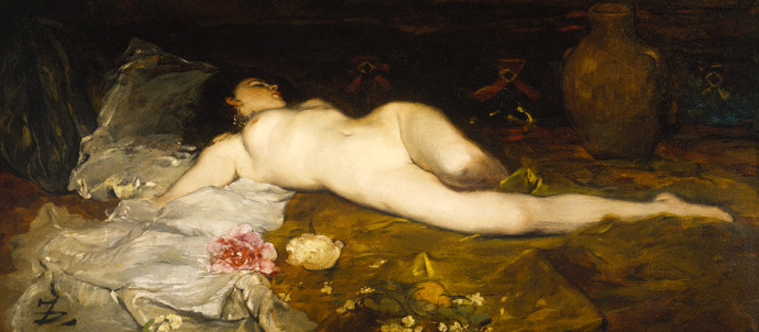
Seated Nude
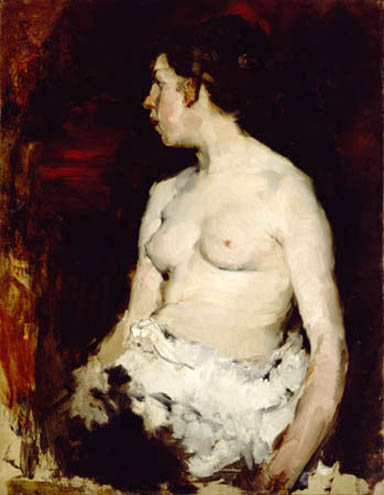
Sheltered Cove: ca 1915
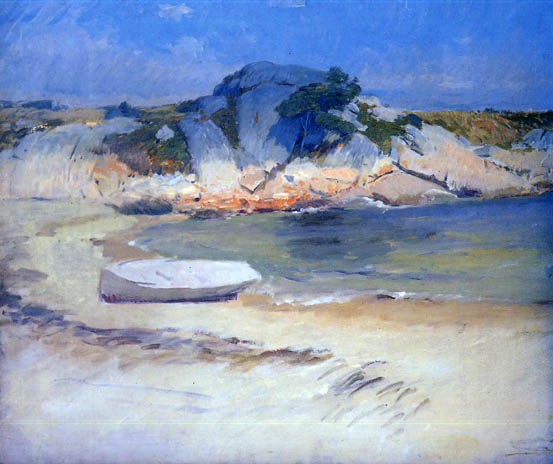
Siesta: 1887
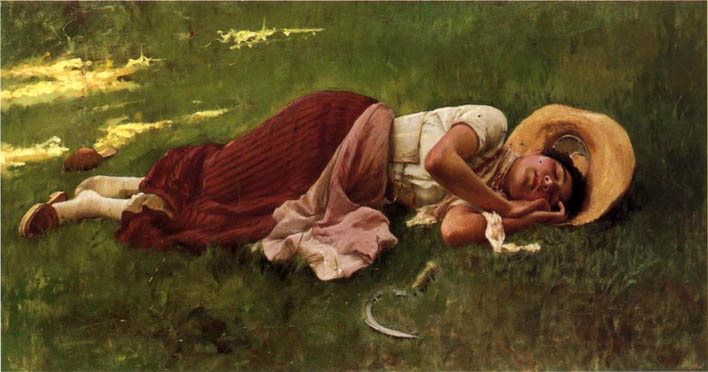
Siesta: ca 1887
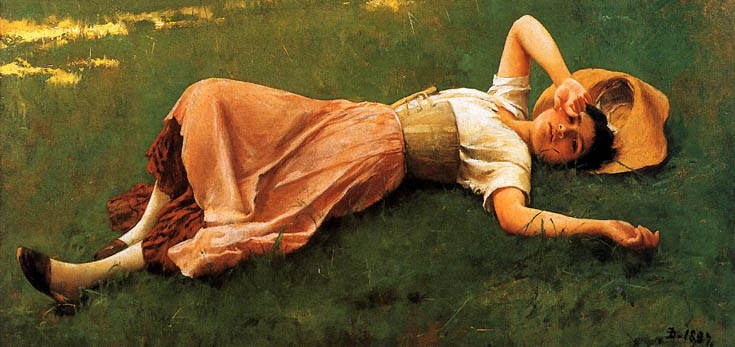
Squire Duveneck: 1877
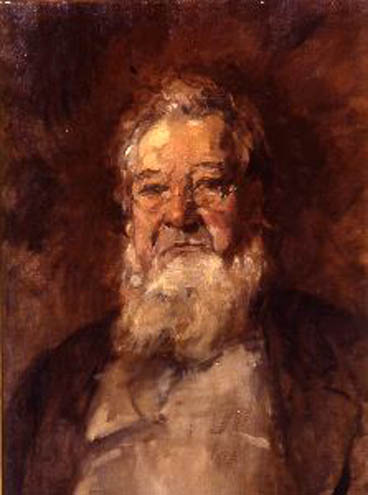
The Bridges - Florence: ca 1880
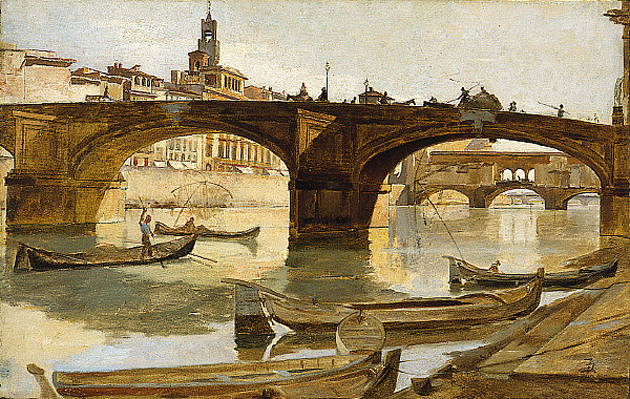
The Cobbler's Apprentice: 1887
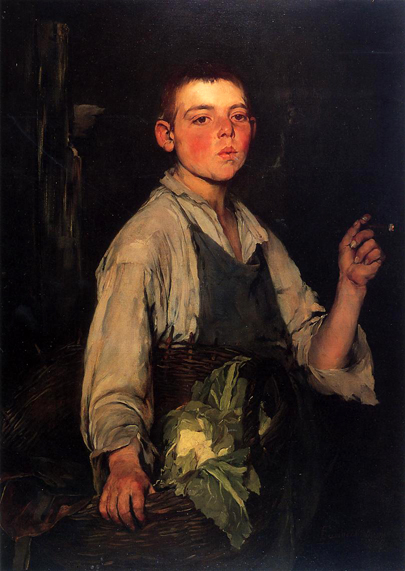
The Music Master: 1879

The Old Professor: 1871
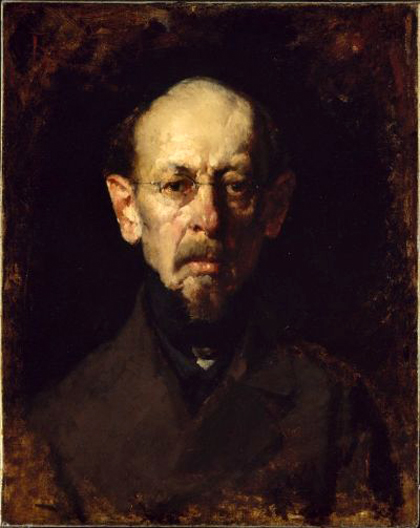
The Rialto Bridge: 1883
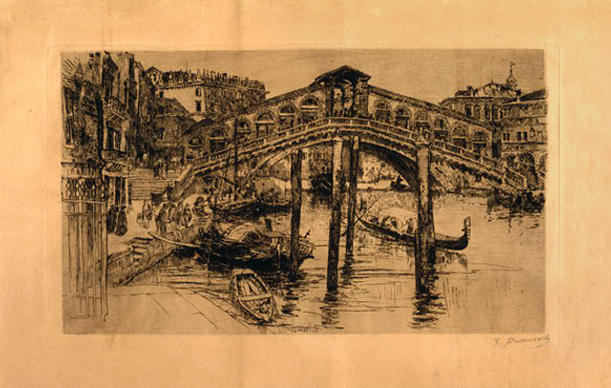
The Turkish Page: 1876
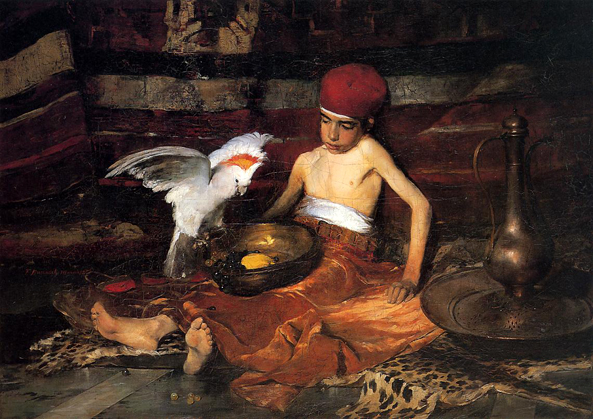
Venetian Fruit Market: 1884
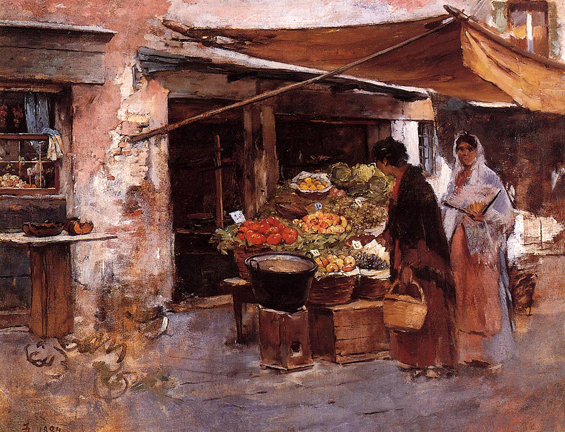
Villa Castellani: 1887
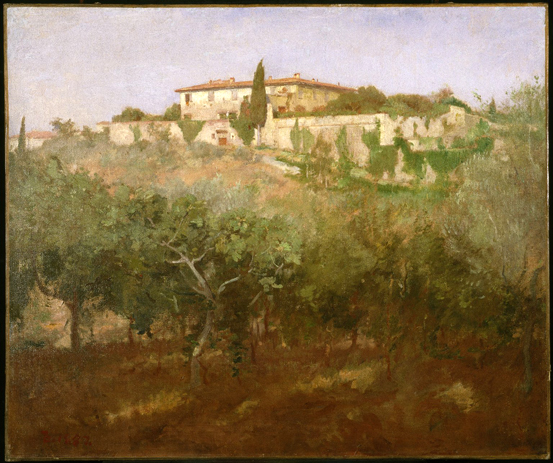
Villa Castellani Belloguardo: 1886-87
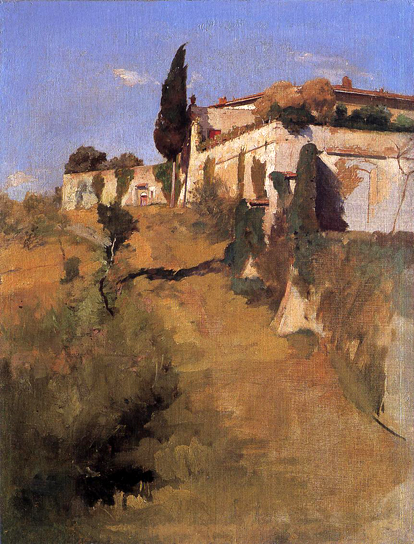
Walter Shirlaw: ca 1873

Washerwomen - Venice (Study): ca 1885
_ca_1885.jpg)
Water Carriers Venice: 1884
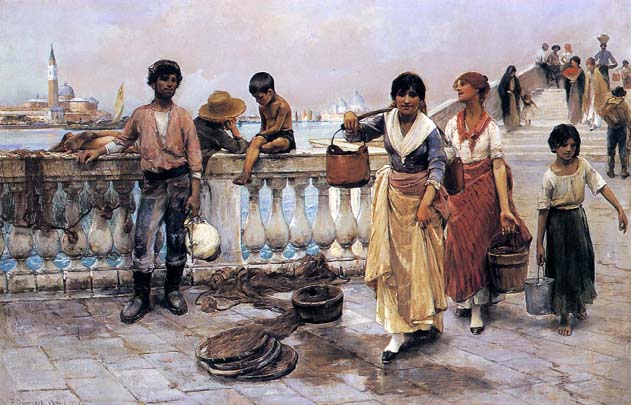
William Gedney Bunce: ca 1877-78
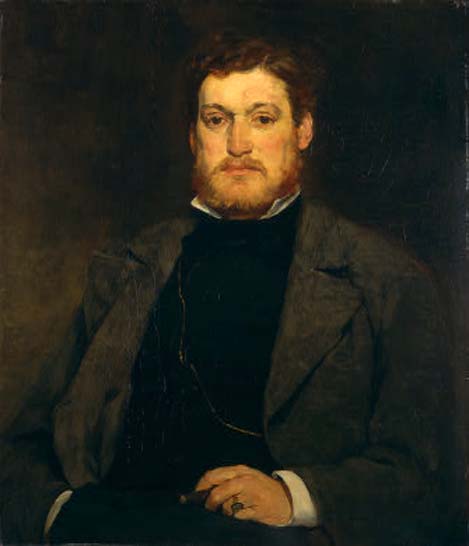
Woman with Forget Me Nots: 1876
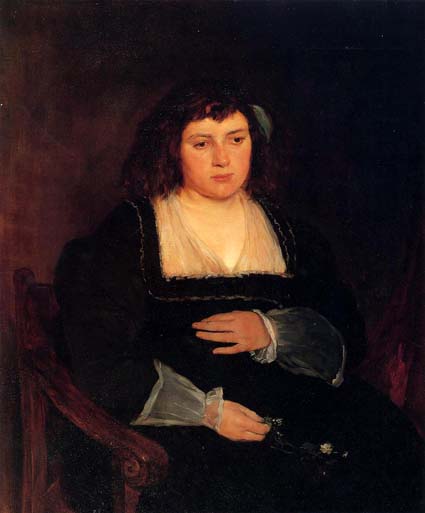
Source: Art Renewal Center
Return to Pagina Artis
Return to Bruce and Bobbie's Main Page.